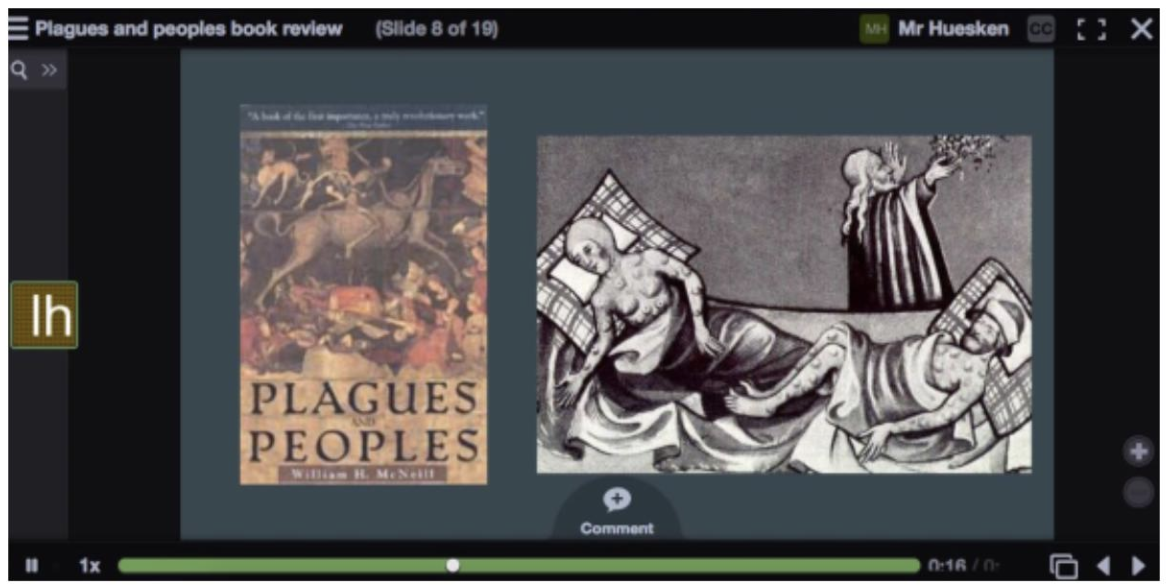Using VoiceThread with History Courses
This is a guest post by History teacher and VoiceThreader, Gerald G. Huesken Jr.

The great Polish-born American rabbi and Jewish leader Abraham Joshua Heschel once wrote that, “Speech has power. Words do not fade. What starts out as a sound, ends in a deed.” In the course of my educational career, when given the option between the written word and the spoken word, I have always found that the spoken word tends to carry more weight, meaning, and depth of understanding for my students then the traditional written reflection or research paper. As a high school instructor, providing power behind student “voice” is something that has often been a consideration with the projects and assignments I assign, while also trying to broaden my student’s academic horizons and experiment with emerging educational technology.
It is with these aspects in mind, that I have made VoiceThread one of the specific resources within my 21st Century classroom for promoting student voice and re-engaging my students in projects that needed a certain level of rejuvenation. I was introduced to VoiceThread during a graduate class I was taking and was intrigued by its blending of visual and audio elements. After some trial and error, I made VoiceThread a part of a traditional written assigned I give to my 10th and 11th Grade Honors World History students as part of their Semester Book Review Project.
See more of my Semester Book Review Project via my teacher website here.
In this project, students select a work of international historical fiction or non-fiction and consider how it relates back to our course content over the length of the semester. Historical insights, personal reflections, and unique historical discoveries all play a role in the student’s final discussion of the book, which they do via the VoiceThread platform. The result has been a much deeper discussion of student work and thought and a more enjoyable grading experience for me.
See some sample student projects via the following links =
* Cera’s project on The Lady and the Unicorn
* Alex’s project on Guns, Germs, and Steel
* Lauren’s project on 1215: The Year of Magna Carta
As a 21st Century educator, I highly recommend the use of the spoken word in student projects whether that is through public speaking, podcasting, or digital recording. Utilizing the spoken word gives student more of a direct ownership over their work in an age were traditional writing has become less engaging as well as the desire for higher quality of and demonstration of student understand. When a student put their voice to a project or topic, it carries power. VoiceThread serves as a perfect tool in this regard. As Rabbi Heschel said, speech truly does have far reaching power…
About the Author:
Mr. Gerald G. Huesken Jr. is a Government and Economics and World History teacher at Elizabethtown Area High School in Elizabethtown, Pennsylvania. A veteran of over a decade in the classroom, Mr. Huesken is a graduate of Shippensburg University and holds a Masters degree in History from Millersville University. Currently, he is concluding a second Masters degree program through Wilkes University in Online Education and is perusing a digital teacher certification from the Pennsylvania Department of Education. Feel free to connect with Mr. Huesken via LinkedIn or follow him on Twitter at @MrHuesken.
